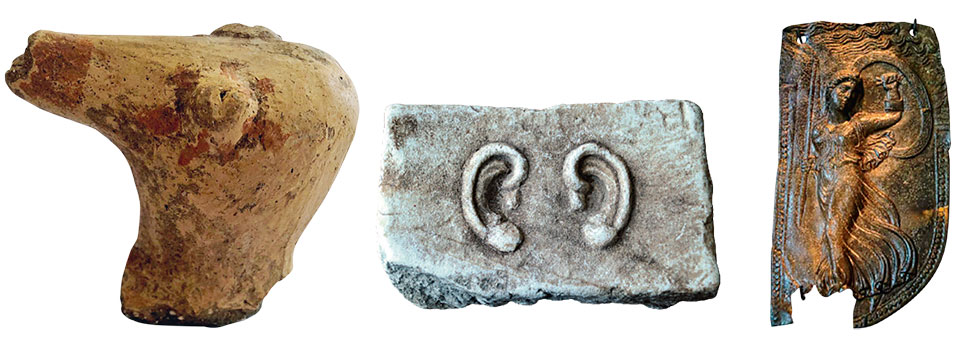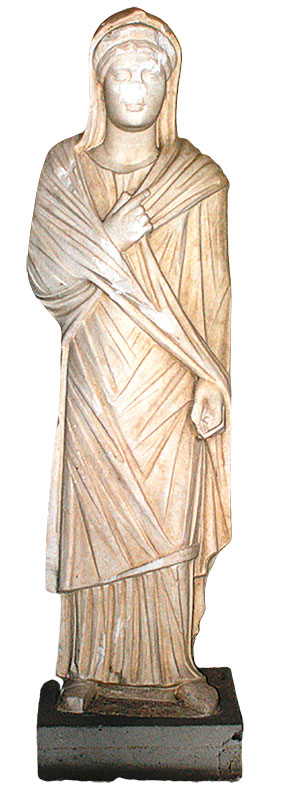
PRINT EDITION. What place did Grevena occupy in the ancient world? What settlements are hidden in the rugged mountainous terrain, what cultures have developed over time, and what was the social, political and economic context of the area? Only archaeological finds could provide answers, but the prefecture of Grevena, with the exception of a few excavations, until recently remained an unexplored place and unprotected from antiquarians who annoy the country. His narrative begins with the first finds of the first excavations of the five-year archaeological program (2021-2025) of the Ephorate of Antiquities of Grevena and the Institute of Classical Archeology of Catalonia at two of the more than 300 sites identified throughout the territory. a prefecture with encouraging and promising results for an area with a rich past from prehistoric to Ottoman times.
Recent investigations have focused on the current communities of Agios Georgios in the municipality of Grevena and Dimitra in the municipality of Deskatis. The first picture of “the existence of an organized city unit in imperial times is formed by funerary gifts from Hellenistic and Byzantine cemeteries, as well as building remains and architectural elements of public buildings – possibly sacred – of a settlement whose identity is still unknown, which, apparently, flourished in the late classical period”. – explained to “K” the head of the excavations Sonya Dimaki.head of the Grevena Ephorate of Antiquities.
New finds from the archaeological site of Agios Georgios are added to important archaeological treasures (votive inscriptions dedicated to Hercules, votive reliefs and a number of other dedicatory objects, probably to Asclepius), which were handed over by the inhabitants or confiscated by the prosecutor’s office. during their trafficking in antique dealers in recent years.

The abundance of pottery and thousands of stone objects testify to the export and processing of stone artifacts in situ.
Among the treasures handed over by the inhabitants, a funerary marble statue of the type of Heracliotissa (3rd century AD) and a bronze helmet paragnathia, a fine example of metalwork, depicting a winged Victory with a tunic, spear and shield (4th century) stand out. “The impressive sculpture of the tomb from Roman times, about 1.5 meters high, copying the original sculpture (type of the great Herakliotissa), has been preserved in excellent condition,” says Ms. Dimaki. The statue depicting the goddess Demeter, standing with a covered head, wrapped in a mantle and a tunic at her feet, was transferred to the Greek state in the late 80s and remains in the warehouses of the Ephorate of Antiquities to this day.
 However, the harvest of last year’s excavations at two cemeteries (of Hellenistic and Byzantine times) out of 12 discovered in the same area was rich. Hellenistic burials were decorated with vases, boats, plaques, amphorae and wine vessels, metal objects (gold earrings, iron knives and rings), and the dating of a late Hellenistic copper coin minted in Thessaloniki (about 148 BC) gives us the historical context of the area, as pointed out by Ms. Dimaki. This is the time when Macedonia became a Roman province after the second Battle of Pydna in 148 BC. and Greece submits to the Romans at the Battle of the Isthmus of Corinth two years later.
However, the harvest of last year’s excavations at two cemeteries (of Hellenistic and Byzantine times) out of 12 discovered in the same area was rich. Hellenistic burials were decorated with vases, boats, plaques, amphorae and wine vessels, metal objects (gold earrings, iron knives and rings), and the dating of a late Hellenistic copper coin minted in Thessaloniki (about 148 BC) gives us the historical context of the area, as pointed out by Ms. Dimaki. This is the time when Macedonia became a Roman province after the second Battle of Pydna in 148 BC. and Greece submits to the Romans at the Battle of the Isthmus of Corinth two years later.
The Byzantine period of Greveni is also little known in the prefecture. Excavations at three cemeteries, the first of which dates back to the 8th and 9th centuries, have unearthed graves adorned with jewels.
Researchers consider the new archaeological site “Vrastero” – a crossroads of continental roads – in today’s Demitra in the municipality of Deskatis, with finds from the Paleolithic, Neolithic and Bronze Age, excavations of great historical importance for animal husbandry and agriculture. life was organized eight thousand years ago. The abundance of ceramics and more than 5,000 stone objects testify to the extraction and processing of stone products on the site in the Upper Paleolithic and Neolithic eras. Statuettes, remains of settlements dating back to 6300-6000. , where the inhabitants of 8000 years ago began to organize agriculture and animal husbandry, gradually leaving group hunting for wild animals for their livelihood.
This year’s finds pave the way for understanding Grevena’s long history. The outlying archaeological services (Larisa and Kozani), to which the prefecture belonged until 2014, when the Grevena Archaeological Service was established, resulted in “poor archaeological data, but also an accumulation of problems in Byzantine temples and stone bridges, most of which were affected by the devastating earthquake of 1996 year,” says Ms. Dimaki. The exceptions are the surface survey conducted by the American School of Classical Studies (late 1980s), excavations for the discovery of Egnatia Odos and the construction of the Hilarion Dam and two AUTHs. added new information about a new unknown Macedonian city from Hellenistic times.The second, made by Professor Nikos Efstratiou in West Pindos, documents the presence of a man at an altitude of 2000 meters 70,000 years ago.The systematic research of the five-year program of the international team of researchers will not only protect the area from antiquities, but also put Grevena on the archaeological map of the country.
James Springer is a renowned author and opinion writer, known for his bold and thought-provoking articles on a wide range of topics. He currently works as a writer at 247 news reel, where he uses his unique voice and sharp wit to offer fresh perspectives on current events. His articles are widely read and shared and has earned him a reputation as a talented and insightful writer.